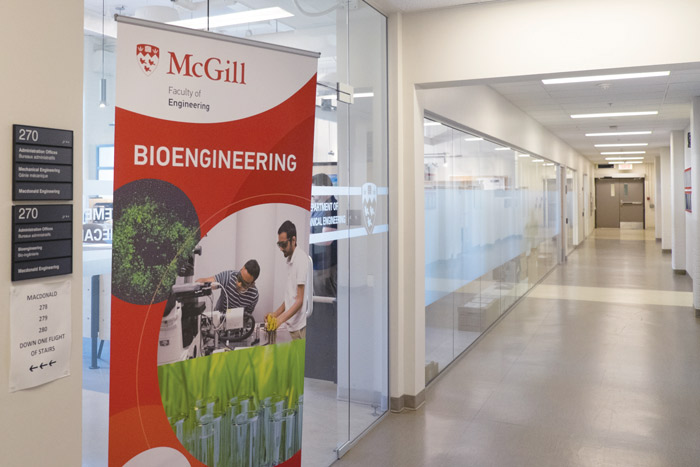The Department of Bioengineering opened its undergraduate program to 30 incoming U0 and U1 students this Fall. According to Antonella Fratino, Administrative Assistant at the Department of Bioengineering, the undergraduate program is the first of its kind in Canada.
After the graduate program was established at McGill in 2012, the proposed undergraduate program underwent two years of extensive internal review within McGill. Program requirements were finalized and courses were approved over the course of the internal review. An external review by the Government of Quebec began in the Fall 2014 and gained final approval by Mme. Hélène David, Quebec’s Minister of Higher Education, three months ago.
According to Fratino, students in the undergraduate program will learn a key set of concepts that focuses on the interdisciplinary, biological nature of engineering.
“We have created a program that puts emphasis on the fundamental principles of engineering and its underlying bases, such as physics, math, and chemistry,” said Professor
Georgios Mitsis, Chair of Undergraduate Studies in the Department of Bioengineering. “What makes our department different from other departments is that we wanted to give [our undergraduates] a solid foundation in biology as well.”
“We want to give our students the background to work in both domains of engineering and biology,” Professor Mitsis added.
The curriculum is separated into three streams: Biological materials and mechanics, biomolecular and cellular engineering, and biomedical, diagnostic, and high throughput screening mechanics. Students will also be given the opportunity to undertake a research project and will be required to conduct a senior design project during their final year.
“The undergraduate bioengineering program will allow students to hone in on what direction they want to go into,” Fratino said.
Professor Mitsis hopes the program will equip students with the ability to apply biology to engineering and vice versa.
“Biology is astonishing. It is a great source of inspiration,” he said. “If you study a biological entity and you study how it functions and how it adapts to its environment, then you can study that in a quantitative manner and try to replicate its function in an engineering design. It’s a two-way street: You can try to use engineering to improve human health, like in prosthetics, but you can also use the healthy organism to try to improve engineering design.”
The program will offer courses in all fields of the sciences and aims to produce well-rounded students. Like other McGill engineering programs, entrance into the bioengineering program is highly competitive, requiring satisfactory academic standing and a high GPA.
Maya Kenton, a U1 student, entered bioengineering in hopes that the program will allow her to combine pediatric oncology research with engineering design. Other students hope to go into the biotechnology industry or bioengineering research.
“I don’t know what to expect yet,” Kenton said. “But I’m excited to learn.”
According to Professor Mitsis, the program hopes to accept 60 undergraduate students each year and centralize all bioengineering professors in the downtown campus in the future. Like any new program, they hope to gain more diverse faculty members and to develop further connections with researchers and companies.
When asked how she felt about the recent launch of the program, Kenton chuckled: “We are the guinea pigs of the department.”
Even so, Kenton is optimistic about the program. “Bioengineering is a wonderful department. In bioengineering, we can make a big impact,” she added. “I think it’s the future.”









